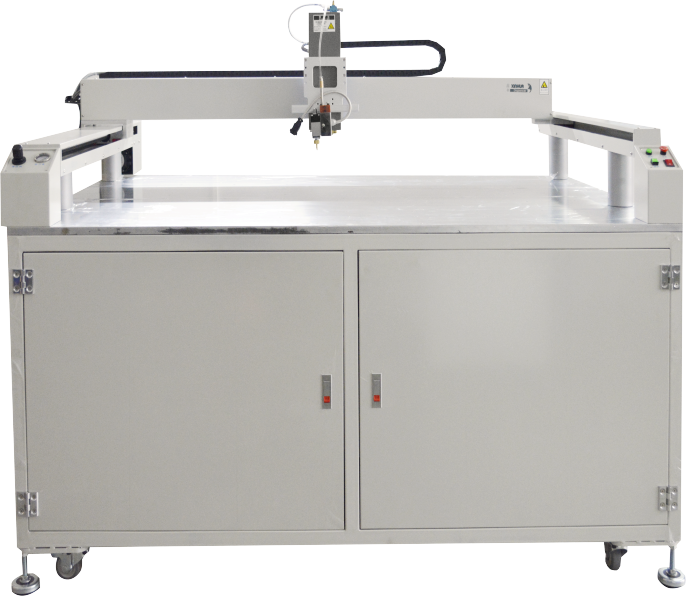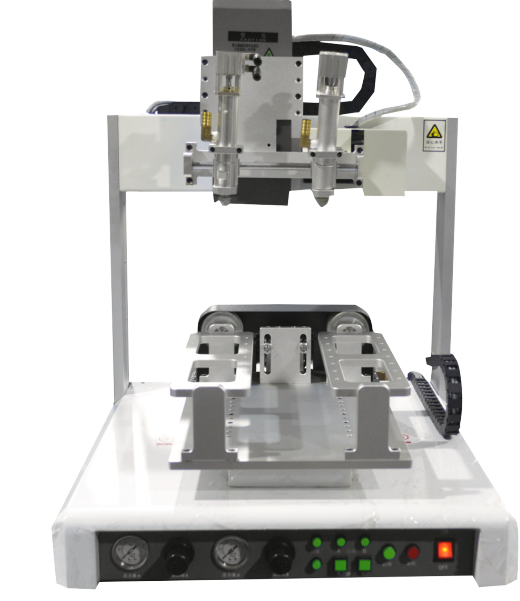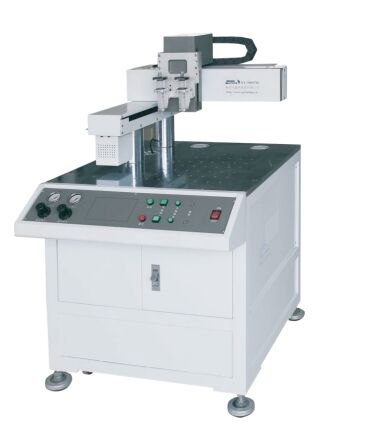 ×
×
Manual glue dispensing machines require operator intervention, which offers flexibility for custom applications such as furniture assembly. These systems empower users to control the glue application process, providing an adaptable solution for unique manufacturing needs. In contrast, automated dispensing systems enhance efficiency by ensuring consistent glue application and reducing labor costs. According to market trends, it’s observed that about 60% of industrial processes are transitioning towards automation due to the increasing demand for precision.
Automated systems suit environments like packaging lines, where consistent application speeds up production and reduces human error. The shift to automation highlights its role in improving operational efficiency across diverse industries, ensuring both reliability and high throughput that manual systems may not offer.
UV curing glue dispensing machines utilize ultraviolet light to cure adhesives quickly, drastically reducing drying time. This technology is proving essential in industries such as electronics and automotive, where rapid processing times are critical for maintaining high productivity levels. Statistically, products cured with UV adhesives exhibit better chemical resistance and bond strength, crucial for high-tech applications where performance cannot be compromised.
Integrating UV curing systems into traditional workflows significantly impacts production timelines by minimizing waiting periods for adhesive curing. This integration not only speeds up the processes but also enhances the quality of the finished products, establishing UV curing as an industrial staple.
In pre-roll packaging, precision glue application is crucial to maintaining the integrity and usability of products. Specialized glue dispensing machines in this sector ensure compliance with regulatory standards and meet consumer expectations, directly influencing product quality. According to industry reports, there's a significant surge in demand for pre-roll packaging solutions, exhibiting a market growth rate of approximately 15% annually.
Cone filling machines, tailored to this niche, enhance operational efficiency and minimize waste. By precisely controlling the amount of adhesive applied, these machines play a pivotal role in streamlining the packaging process and ensuring consistent product quality, which is essential in maintaining competitive advantages in a growing market.
Accuracy is vital in glue application for ensuring the quality of products, especially where precise measurements are demanded. Standards in this field are often measured in microns, with repeatability typically within +/- 0.1 mm. Precision dispensers help mitigate material waste and ensure strong bonding, factors crucial in industries like automotive and aerospace. Investing in accurate glue dispensing systems can offer up to a 30% return on investment by reducing material costs and maintaining high product quality.
In manufacturing, balancing speed and glue application consistency is crucial for maintaining production efficiency. Research reveals that manufacturers often face challenges when prioritizing one over the other, which can affect overall workflow and efficiency. However, by adapting glue dispensing techniques, manufacturers can optimize both speed and consistency, thereby enhancing operational processes. Case studies suggest that refining these techniques can significantly improve production outcomes.
Success in diverse production tasks often depends on choosing glue dispensers that are compatible with various adhesive materials. Manufacturers commonly use different types of adhesives, such as PVA and epoxy, tailored to specific project needs. Hence, flexible dispensing systems are vital. Studies indicate that compatibility issues can lead to significant delays and defects, highlighting the necessity for versatile systems that accommodate a range of materials effectively. Reliability in glue dispenser versatility ensures seamless integration into varied production environments.
The 3-Axis Large Working Auto-Glue Machine is meticulously engineered for high-precision applications, making it indispensable in various industries such as furniture, automotive, and aerospace. Its generous working area, measuring 1300 cm in width by 1000 cm in depth, ensures comprehensive coverage, thereby minimizing the need for multiple setup changes during production processes. User feedback has widely praised the machine, noting an impressive 20% boost in productivity for manufacturers who incorporate this technology into their workflows. By reducing material waste and ensuring robust bonding, it exemplifies the standards of precision glue application.

The Four-Axis Turnover Dispensing System stands out for its unique ability to manage complex geometries, empowering manufacturers to advance sophisticated techniques and designs. It facilitates versatile material application, thereby enhancing market competitiveness for companies adopting this system. Industry surveys highlight that organizations utilizing the Four-Axis System frequently report improved production timelines and the significant reduction of rework rates by up to 25%. This makes the system suitable for industries where precision and efficiency are paramount, such as automotive and electronics manufacturing.

The XY-300TM is renowned for its rapid application capabilities, making it an ideal choice for high-volume production environments. Structurally robust, it achieves up to 1000 ml of adhesive application per minute thanks to cutting-edge control technologies that stabilize application consistency at high speeds. This technological advancement results in decreased operational costs and increased throughput by 30%, surpassing traditional models' performance. Thus, the XY-300TM represents a top choice for companies aiming to scale their production lines efficiently without compromising on quality and precision.

Air entrapment in glue dispensing systems can lead to erratic applications, which pose serious risks to the quality of the final product. To maintain consistency, it is crucial to implement air venting techniques and conduct regular maintenance checks. Incorporating these practices can significantly minimize air-related issues within glue lines, ensuring more reliable adhesive applications. Best practices involve consistent monitoring and making necessary adjustments, which enhance the reliability of adhesive application and reduce the incidence of defects. Avoiding air entrapment is vital in maintaining consistent fluid dispensing, as highlighted in fluid dispensing studies.
Proper calibration of glue dispensers is essential, particularly in woodworking, where precision ensures the integrity of joints. Establishing a routine calibration schedule and employing digital measurement tools can achieve desired accuracy and repeatability. This ensures that woodworking glue dispensers, like woodworking glue dispensers, apply adhesive correctly. Statistical data indicates that effective calibration can reduce glue wastage by up to 15%, significantly enhancing overall production efficiency. By adopting comprehensive calibration techniques, manufacturers not only maintain quality but also improve profitability through reduced material costs.
Regular maintenance of cone filling systems is critical to prolong their lifespan and ensure reliable operation, especially under high-demand environments. By establishing and adhering to a maintenance checklist, common issues like clogging and inconsistent flow rates can be effectively mitigated. Industry standards recommend scheduling maintenance every six months to avert significant downtime and avoid costly repairs. These protocols are similar to those applied to glue system maintenance, ensuring optimal long-term performance. For those utilizing these systems, timely maintenance is indispensable in maintaining operational efficiency.